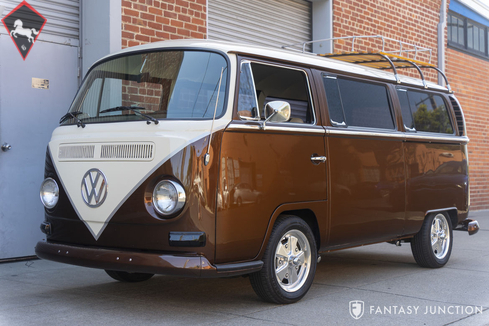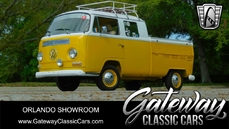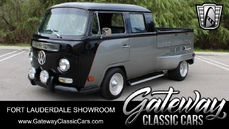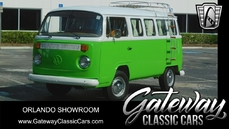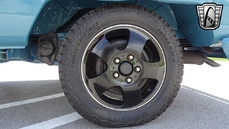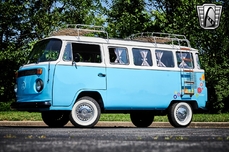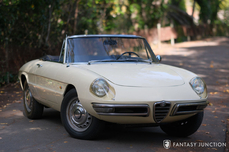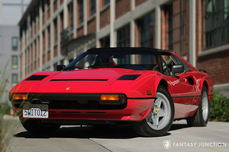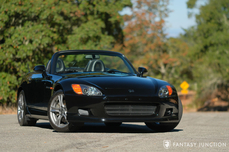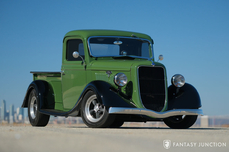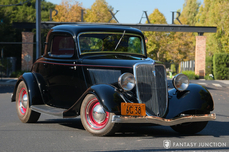Volkswagen Typ 2 (post 1967) Bulli 1.6L flat-4cylinder 1968
Allgemeine Beschreibung :
1968 Volkswagen Type 2 MicroBus
Chassis No. – 228101468
Engine No. – B0044343
Exterior Color – Two Tone Brown and White
Interior Color – Brown
Engine – 1.6 Liter Flat Four Cylinder
Transmission – 4-Speed manual transmission
Mileage – 82,884 miles TMU
Current owner – Purchased in 2015
Highlights of This Car
-Tastefully customized second-generation curved windscreen Microbus
-1600cc engine and 4 speed with custom interior, polished wheels, and detailed engine
General History
Unless you’ve been hiding under a rock for the past 70 years, chances are you’ve either owned, driven, or been a passenger in the ubiquitous VW bus. Known as the Transporter, Kombi, or Microbus, the Type 2 bus was the seminal vehicle that ushered in the genre of modern vans and delivery vehicles. By the 1960s, US built vans would appear from all American manufacturers, but the VW bus was first. Though the earliest Type 2 buses were used primarily for commercial purposes, they developed a dedicated following among anti-establishment counterculture in the 1960s, embodying the free spirit of the 1960s and adventurous lifestyle associated with camping, exploring, and living “off the grid”. Even VW caught on offering family oriented camper variants with additional aftermarket features including a roof-mounted boat, pop-out tent, and interior convenience appliances. By 1967, the second-generation arrived updated with notable changes including a single piece curved windshield, upper rear air intakes, 12 volt electrical system, half-shaft axles with CV joints, and a 1.6 liter engine. Continued under Volkswagen production, the new Type 3 would replace the iconic design with a more angular variant, making the second-generation the last of the originals.
Over the years, individuals have customized their Microbuses with personal touches making them unique and desirable as personal design statements, each as a unique part of VW bus history and import in modern culture. Today the VW bus remains an important and desirable cultural icon of freedom, independence, and lifestyle, transcending the category of automobile into a whole new lifestyle brand. Collectors frequently will spend upwards of six figures for the right Samba or 23 window variant, making these second-generation transporters very desirable for enthusiasts who enjoy driving and showing their unique buses.
History of This Bus
This Microbus has benefited from tasteful custom work performed on the exterior and interior with attention to the drivetrain, mechanical systems, and cosmetics. The build was based on a solid and drivable bus with generally good cosmetics. The body shell was stripped and painted using Sunset Bronze Mica and Antique White. A custom luggage rack was fabricated for the rear of the bus using wood and bent metal rod. The interior was configured with full carpet, front bucket seats with pass-through to the rear, and a versatile contoured rear bench seating area finished in two-tone materials.
Current ConditionToday this Microbus presents as a nice combination of restored and custom features reflective of factory specifications when delivered new with modest upgrades that retain the original character of the 1968 design. The two-tone paint is glossy throughout and properly applied with smooth coverage on the exterior surfaces. The mica flake brown has a nice warm root-beer color to it with the antique white adding a bit of vanilla ice cream, the combination of which suggests a refreshing root beer float. The fit and finish is quite nice overall with excellent panel fit to the hood, doors, rear window hatch, and engine lid. Some trim has been treated to a higher-level polish, while the rubber gaskets and various trim reflect confidence balancing a driver-level vehicle inside and out. The doors, rear window, and engine lid open and close smoothly from the outside and inside, including the single driver’s side rear sliding door. The overall condition of the lighting, lenses, and emblems is excellent. The glass is in very good condition throughout, bearing the Sekurit glass branding imprint on all glass panels with the exception of the curved windshield which has been replaced with a contemporary FY brand unit. The front and rear bumpers have been painted body color, blending nicely into the body and creating a smooth transition to the integrated front doorstep. A set of large 5-bolt pattern Fuchs-style wheels are polished and appropriately mounted giving the bus a nice custom, slightly lowered stance. A set of Mayrun radial tires are mounted. Both the front and rear turn indicators feature custom lenses.
The interior has been very well done with clever use of space, including L-shaped corner seating in the rear passenger compartment, two-tone upholstery, and nice use of carpeting and material accents finishing off the under-dash and side panels of the interior to a very pleasing level. The headliner appears to be an original type, while the various details on the stock dashboard remain original with a few exceptions including an aftermarket Sunpro tachometer, polished metal foot pedals, and an EMPI gear shift lever. A rear mounted Sharp flat-screen television monitor is included with the bus which is believed to have been planned for tailgating events when hooked up. Though no provisions are currently in place for power, vans like this frequently will have electronics installations powered by dedicated batteries. For now, the monitor can be safely stowed beneath the rear storage compartment above the engine.
The engine compartment is both cosmetically and mechanically tidy with very good finishes befitting the custom nature of the build. The engine is stamped with the BO series prefix, indicating this is a 1968-1970 non-US series engine. The engine compartment features a combination of generally authentic finishes with some mixed in custom touches including a few hardware enhancements, numbered engine pulley, single Solex carburetor, and correct corrugated aluminum ducting to finish off the engine compartment. The undercarriage is representative of a generally clean and enjoyable example though some areas are showing rust that has penetrated some of the floor and supporting rocker panel metal.
This is an excellent opportunity to acquire a nicely customized second-generation Microbus. Part of the iconic 1960s and continuing to excite collectors and enthusiasts today, this VW Type 2 Transporter is sure to excite the next worldwide generation of enthusiasts just as it has for so many years since its earliest inception.
https://fantasyjunction.com/inventory/1968-volkswagen-type-2-microbus/overview
1968 Volkswagen Typ 2 (post 1967) Bulli 1.6L flat-4cylinder is listed verkauft on ClassicDigest in Emeryville by Fantasy Junction for Preis nicht verfügbar.
Fakten der Auto
Karosserietyp : Auto Marke : Volkswagen Modell : Typ 2 (post 1967) Bulli Ausführung : 1.6L flat-4cylinder Hubraum : 1.6 Modelljahr : 1968 Lage : Emeryville Fahrzeug Anmeldung : Normal
Verkauft
Angaben Zum Verkäufer
Verkauft
People who viewed this Volkswagen Typ 2 (post 1967) Bulli also viewed similar Volkswagen listed at ClassicDigest
Other cars listed for sale by this dealer
über Volkswagen
Die Volkswagen-Geschichte ist in der Tat eine faszinierende Geschichte von Innovation, Belastbarkeit und Wiederbelebung nach dem Krieg, die von verschiedenen Modellen gekennzeichnet ist, die in der Automobilgeschichte zu Ikone geworden sind.Das Volksauto (Volkswagen): Zunächst von Adolf Hitler in den 1930er Jahren als "Volksauto" oder "Volkswagen" auf Deutsch vorgestellt, war die Idee, ein erschwingliches und praktisches Fahrzeug für das deutsche Volk zu schaffen. Dieses Konzept führte zur Entwicklung des von Ferdinand Porsche entworfenen Volkswagenkäfers (oder des Typ 1).
Nachkriegsherausforderungen: Nach dem Zweiten Weltkrieg stand Volkswagen erhebliche Herausforderungen. Die Fabrik war stark beschädigt, und die Verbindung der Marke mit dem NS -Regime führte in einigen Regionen zu einem mangelnden Interesse an dem Auto.
Britische Intervention - Die britische Armee & Ivan Hirst: Die britische Armee übernahm die Kontrolle über die Fabrik in der unmittelbaren Nachkriegszeit. Major Ivan Hirst, ein Offizier der britischen Armee, spielte eine entscheidende Rolle bei der Wiederbelebung von Volkswagen. Er erkannte das Potenzial des Käfers und setzte sich für seine Produktion ein. Er überzeugte das britische Militär, mehrere tausend Autos zu bestellen. Diese Entscheidung hat dazu beigetragen, die Wiederbelebung der Marke zu starten.
Exporterfolg und der globale Anziehungskraft des Käfers: Der Käfer gewann nicht nur in Deutschland, sondern auch weltweit an Popularität und wurde zu einer Ikone des erschwinglichen Fahrwerks. Das einfache, zuverlässige Design und das einzigartige Erscheinungsbild machten es zu einem Favoriten unter den Verbrauchern weltweit.
Modellentwicklung: Im Laufe der Jahre führte Volkswagen verschiedene Modelle neben dem Käfer ein, wobei jeder zum Wachstum der Marke beitrug:
Typ 2 (VW -Bus oder Transporter): In den 1950er Jahren wurde er in den 1960er Jahren zu einem ikonischen Symbol der Hippie -Bewegung eingeführt und wurde wegen seiner Geräumigkeit und Vielseitigkeit geliebt.
Golf (Kaninchen in den USA): Der Golf (oder Kaninchen in den USA) wurde Mitte der 1970er Jahre ins Leben gerufen und markierte eine Verlagerung in Richtung Frontantrieb, modernes Design und Schrägheckpraktikabilität und wurde zu einem Eckpfeiler des Erfolgs der Marke.
Passat, Jetta und andere Modelle: Volkswagen erweiterte seine Aufstellung mit Modellen wie dem Passat und Jetta, die sich für verschiedene Marktsegmente befassen.
Herausforderungen und Innovationen: Trotz des Erfolgs stand Volkswagen vor Herausforderungen, einschließlich Qualitätsproblemen in den 1970er Jahren. Die Marke hat jedoch weiterhin neue Modelle und Technologien entwickelt und entwickelt.
Aufstieg des GTI und globaler Expansion: In den 1980er Jahren stieg der legendäre Golf GTI auf, eine Hochleistungsversion, die den Trend der heißen Luke auslöste. Volkswagen erweiterte auch seine globale Präsenz in diesem Zeitraum.
Die britische Intervention bei der Wiederbelebung von Volkswagen nach dem Zweiten Weltkrieg spielte eine entscheidende Rolle bei der Wiederbelebung der Marke. Während es in den 1950er und 1960er Jahren aufgrund des Erfolgs von Volkswagen in den 1950er und 1960er Jahren möglicherweise einige Spannungen oder einen Wettbewerb zwischen Automobilunternehmen gegeben hat, hat die Fähigkeit der Marke, innovative und beliebte Modelle zu produzieren, ihren Platz in der Automobilgeschichte festigend.
